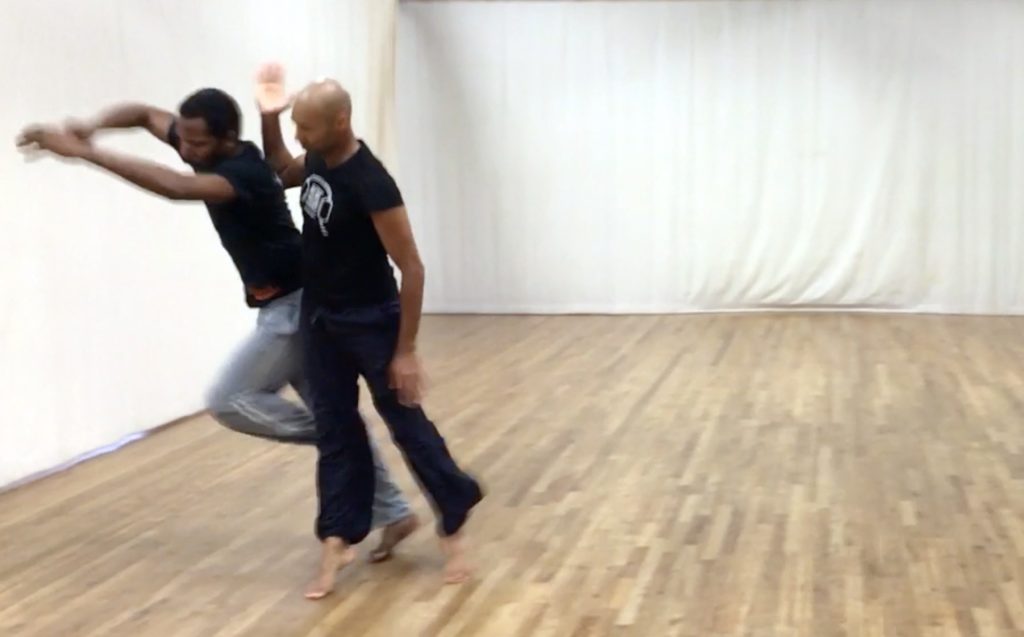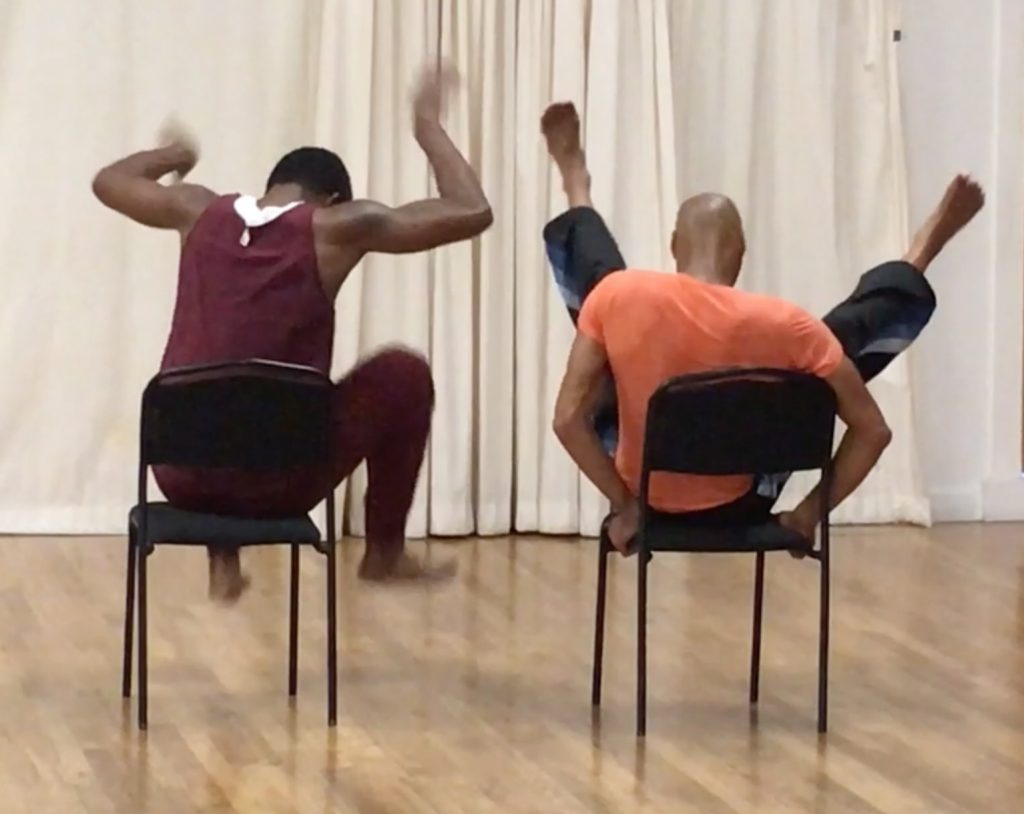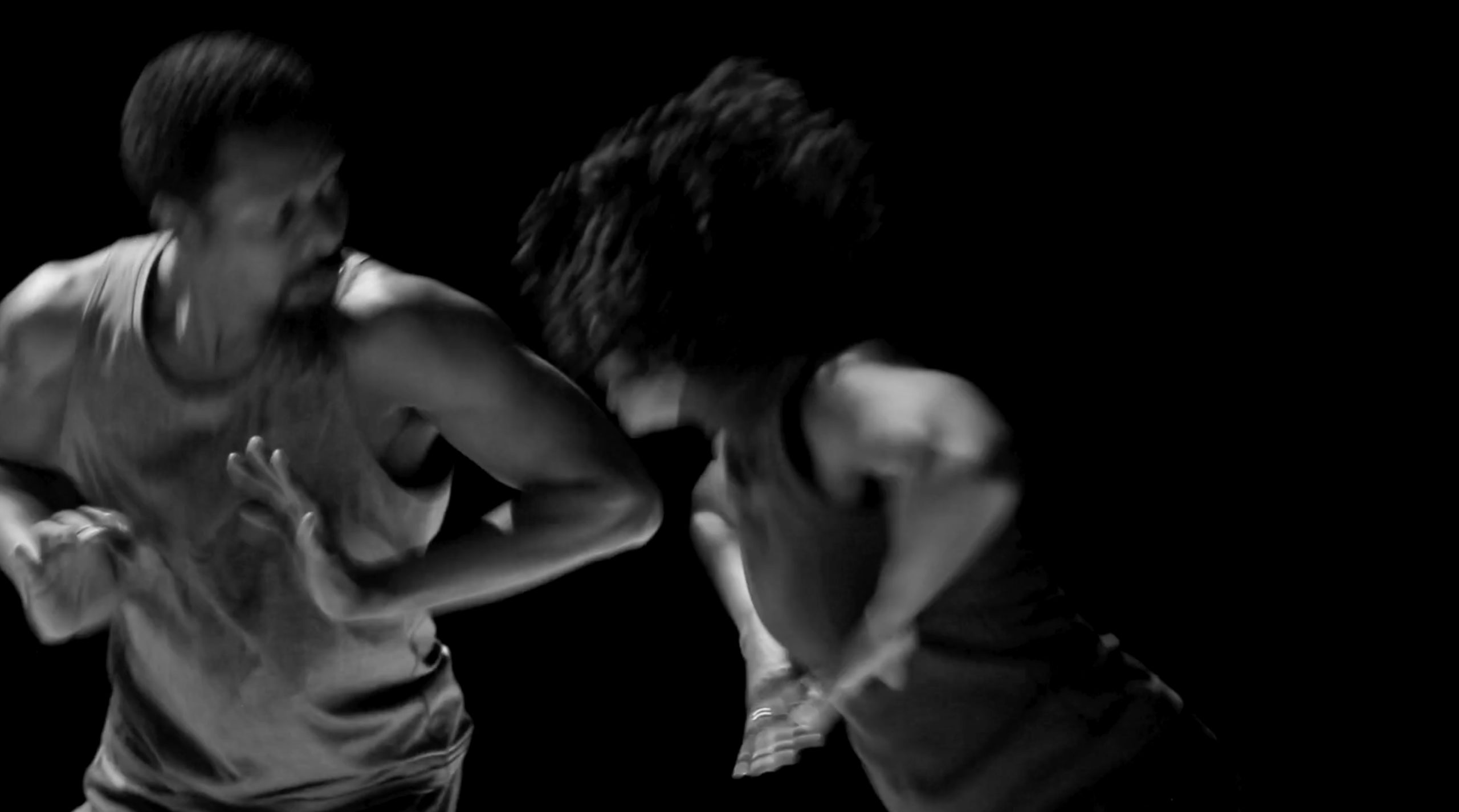
A jump forward in the context of the project comes in August. Tré joins Darrell and me for a four-day residency in Seattle. Darrell and I are finishing up a teaching week at the Seattle Festival of Dance Improvisation and have been invited by Velocity Dance Center to stay awhile longer for rehearsals and an informal showing. Rick Manayan, a student of Darrell’s from Wesleyan University, acts as DJ; Shannon Drake, a BFA graduate from The Ohio State University and former student of mine, is scribe for capturing the train of conversation; Lila is project base.
It is intense to focus so closely on these two men, old friends. They dance together, they share what they know about dancing, they talk about folks they know, about what’s happening in the world, about black contemporary culture, black and gay contemporary culture, ways of improvising, intimate histories. The room is racial, cultural, personal, current, choreographic. They are sweet and fierce and articulate, they divulge what has passed, they challenge, and they conceal. There is a flood of memories between them, shared but not the same.
Their openness to each other in this work is overwhelming. I wonder, what is to be witnessed, what is to be directed, what is to be left alone? One moment brings up another. Rick finds an episode from The Read, a weekly pop culture podcast by Kid Fury and Crissle West, in which they were having a fine time dissing Kanye West. Next, they bring in an interview from the 1990s between Toni Morrison and Charlie Rose on responses to her book Paradise, and the racialized expectations embedded in the consumption of her work as a whole. I hear singer Nelly’s “Country Grammar” (from 2000) playing at a donut shop down the street and bring it into the mix. I set up call-and-response dances between Darrell and Tré, joining in now and again to catch, throw, and share timing and phrasing.
By the end of the four days we’ve consolidated a duet.
The range of dancing has been incorporated into a somewhat malleable score, although much of the week’s work has been ingested and filed as back-story. However, the structural tone, the syntax, is unforgettable. The duet feels like a pivot point in the project—race, blackness, abstraction, the circumstances of women and men, art-making, and form are at play.

There’s a change, however, by the time we premiere the work. Darrell isn’t able to continue with the project. Christal steps into Darrell’s role in the duet with Trebien, adding another voice to this particular conversation.
